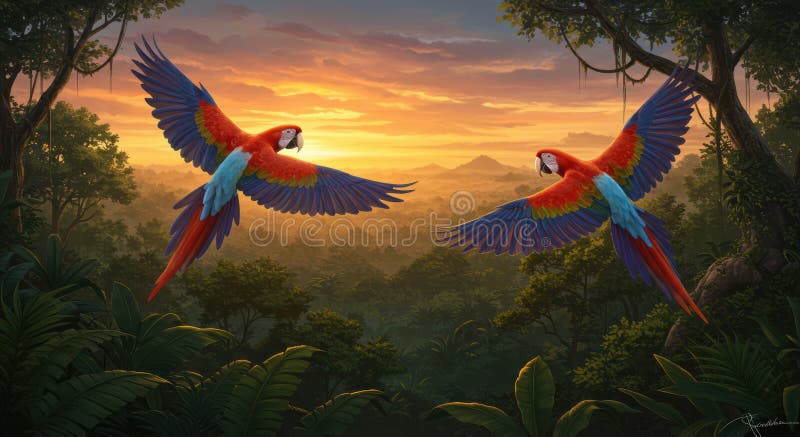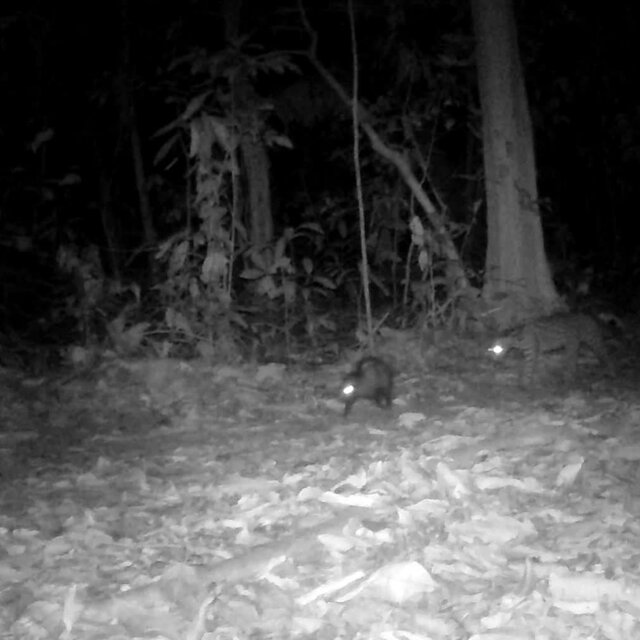Amazon Awakened: A Photographer's Journey Through Brazil's Biodiversity Hotspot

The Amazon. Just the name conjures images of dense, impenetrable jungle, vibrant wildlife, and untamed adventure. As a wildlife photographer specializing in birds, I’d dreamt of exploring this legendary landscape for years. Finally, that dream became a reality with a two-week photography tour deep into the Brazilian Amazon. This journey was more than just a photo expedition; it was an awakening.
My adventure began in Manaus, a bustling city at the confluence of the Rio Negro and the Solimões River. Stepping off the plane, I was immediately engulfed by the humid air, thick and heavy with the scent of earth and vegetation. The cacophony of sounds was overwhelming – a symphony of buzzing insects, croaking frogs, and the calls of unseen birds. After a brief respite, I boarded a traditional riverboat, my home for the next two weeks, and we set course into the heart of the Amazon. The vibrant green landscape unfolded before me, an endless expanse of towering trees, tangled vines, and shimmering waterways.
Sunrise Spectacle: Photographing Macaws on the Rio Negro
One of the highlights of the trip was a sunrise river cruise on the Rio Negro, specifically to photograph scarlet macaws. Waking before dawn, I grabbed my Canon EOS R5 and my trusty RF 100-500mm lens. As we navigated the dark waters, a thick mist rose from the river, creating an ethereal atmosphere. The pre-dawn light was incredibly challenging to shoot in, requiring high ISO settings and a steady hand.
My goal was to capture the perfect shot of scarlet macaws taking flight against the sunrise. The early morning light was diffused and dim; I had to push my camera to its limits, shooting at ISO 3200, f/5.6, and 1/500s. Finally, after what felt like an eternity, the moment arrived. A flock of scarlet macaws erupted from the trees, their vibrant red plumage contrasting against the fiery orange sky. I fired off a series of shots, hoping to capture the perfect composition.
Back on the boat, reviewing the images, I found one that stood out. With some careful post-processing in Adobe Lightroom, I was able to enhance the colors and sharpness, bringing out the intricate details of the macaws' feathers and the drama of the sunrise. The image encapsulated the raw beauty and vibrant energy of the Amazon.
Nocturnal Encounters: A Jungle Night Hike
Another unforgettable experience was a challenging night hike into the rainforest. The jungle transforms at night, revealing a hidden world of nocturnal creatures. The sounds intensified – a chorus of chirps, clicks, and rustling leaves, creating an almost palpable sense of anticipation.

Equipped with a red-light headlamp (to minimize disturbance to the animals), I cautiously followed our guide through the dense undergrowth. The air was thick with humidity, and every step required careful navigation. The highlight of the hike was a fleeting glimpse of a rarely seen ocelot, its eyes glowing in the darkness. I managed a few quick shots before it disappeared back into the shadows.
Photographing nocturnal animals requires a deep understanding of their behavior and ethical considerations. It's crucial to respect their habitat and avoid causing them stress. Using a red-light headlamp helps minimize disturbance, and avoiding flash photography is essential. The goal is to document their lives without interfering with their natural behavior.
Sustainable Sustenance: Food with a Story
The tour also provided an incredible opportunity to experience sustainable food practices firsthand. One evening, we enjoyed a delicious meal featuring pirarucu fish, sourced directly from a local community committed to sustainable fishing practices.
I learned that the community carefully manages the pirarucu population, only harvesting mature fish and allowing younger ones to thrive. This ensures a healthy fish population for future generations, while also providing a vital source of income for the local community. The pirarucu was grilled to perfection, its delicate flavor enhanced by the smoky aroma of the wood fire.
Another highlight was a refreshing açaí bowl, made with berries sourced from a local cooperative. The cooperative works directly with indigenous communities, providing fair wages and supporting sustainable harvesting practices. By choosing açaí from this cooperative, we were contributing to both the environmental and economic well-being of the region. Knowing the story behind the food made it even more delicious.
Rainforest Reverie: Intricate Details and Interconnectedness
The Amazon rainforest is a masterclass in intricate details and interconnectedness. The interplay of light and shadow filtering through the dense canopy created a mesmerizing effect, transforming the forest floor into a canvas of textures and patterns.

The textures of the bark on ancient trees, the vibrant colors of the fungi growing on fallen logs, and the delicate patterns on the wings of insects – every detail told a story of resilience and adaptation. Observing the rainforest up close revealed the vital importance of the interconnectedness of flora and fauna for the ecosystem's health. Each organism plays a crucial role in maintaining the balance of this incredibly complex environment. The decomposition of fallen leaves nourishes the soil, providing essential nutrients for new growth. Insects pollinate flowers, ensuring the reproduction of plant species. Predators keep populations in check, preventing any single species from dominating the ecosystem.
Capturing the Amazon: My Gear and Techniques
Throughout my journey, my Canon EOS R5 proved to be an invaluable tool. Its exceptional image quality and fast autofocus allowed me to capture stunning images even in challenging conditions. The RF 100-500mm lens was my go-to for bird photography, providing the reach I needed to capture intimate portraits of these elusive creatures. For landscapes, the RF 15-35mm lens allowed me to capture the immense scale of the Amazon rainforest.
A Call to Action: Protecting the Amazon for Future Generations
My two weeks in the Amazon were a transformative experience, a true awakening to the beauty and fragility of this incredible ecosystem. But the Amazon is under threat from deforestation, mining, and climate change. It's up to all of us to protect this vital resource for future generations.
I urge you to support sustainable tourism and conservation efforts in the Amazon. Consider donating to organizations like the Rainforest Action Fund, which works to protect rainforests and support indigenous communities. When planning a trip to the Amazon, choose eco-friendly tour operators who are committed to responsible tourism practices. By traveling responsibly, supporting local communities, and advocating for conservation, we can all play a part in preserving the Amazon rainforest for years to come. The keywords like "Amazon Wildlife Photography Tour", "Brazil Amazon Photography Expedition" and "Ethical Amazon Tourism" are crucial to raising awareness and attracting like-minded individuals.
The Amazon is calling. Answer its call responsibly, and let's work together to ensure that this incredible biodiversity hotspot continues to thrive.